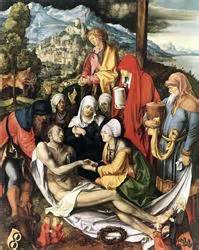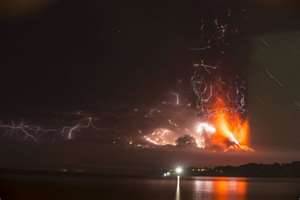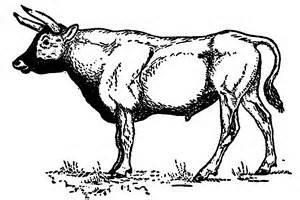
Salty Sam’s Fun Blog for Children
Number 141
Volcanoes
Hello Everyone

Bill and Bob were very busy making models for their model railway last week, and it obviously put them in the mood for making more because this week they embarked on making yet another model – and it was the biggest one yet!
This time, it was a model volcano for a science project they were doing at school.
The model was a project Miss Pringle, their teacher at the Rocky Bay Primary School, had set for the half term holidays.
Miss Pringle had already taught them what volcanoes were and also about some of the most famous ones.
This is what she told them…
Beneath the soil and the seabed there is solid rock and this goes down for many miles. This rock crust sits on a sea of hot, molten lava (melted rock). ln the places where the earth’s crust is thinner, hot magma (molten lava and gas) can push its way up to the surface. The ground rises up and forms volcanoes.
The surface crust of the world is formed of plates of rock and these can move around as they float on the sea of hot, liquid rock beneath. ln some places they pull apart, and in some places they push together.
At the places where these plates meet, volcanoes and earthquakes often occur. There are many around the Pacific Ocean for example, and this area is known as ‘The Ring of Fire’. That is why places like New Zealand, Alaska, Chile and Japan are prone to earthquakes.
lf you don’t know where these places are; look in an atlas or on a world map.
The Hawaiian lslands are actually a group of volcanoes. These volcanoes tower above the seabed far below and only the tops of them can be seen above the sea. Although some of them are now extinct (that is to say, not likely to erupt again because they have no magma supply), the largest volcano in the world is to be found there. lt is called Mauna Loa and the crater at the top is over 2 miles across.
New islands can still be formed by erupting volcanoes. One such island rose up out of the sea on 20th November 2013 to the far south of Tokyo.
The name ‘volcano’ comes from the Roman god of fire Vulcan. The study of volcanoes is vulcanology/volcanology and the scientists who do this are vulcanologists/volcanologists.
When volcanoes erupt, some of them dribble lava streams down their outsides and spew gas out from their summit into huge clouds, and some explode violently hurling vast quantities of rock into the atmosphere. There can be lightning flashes inside these clouds above the mouth of the volcano and the ash clouds can travel for thousands of miles.
The ash cloud shoots into the air to begin with and then cascades down the sides of the mountain like an avalanche. This is called a pyroclastic flow. lt is full of ash, pumice and stones and travels so fast that nobody could outrun it. lf you ever see a volcano erupt, don’t stand and watch it – get into your car and start driving away!
When Mount ST Helens in Washington State (USA) exploded in 1980, dust was found the next day covering buildings and cars across the west side of Canada as far away as Edmonton.
There are over 800 volcanoes in the world and many of them are under the sea. The lava that comes out of them is so hot it boils the sea water!
One of the most famous volcano eruptions was Mount Vesuvius in 79 AD when the cities of Pompeii and Herculaneum were covered in a sea of lava and mud so quickly that the people living there did not have time to get away.
After a terrible earthquake, the top of the mountain split open and a huge cloud of hot ash shot into the air. The eruption probably lasted for about 19 hours.
The site of this catastrophe has been interesting to the archaeologists who uncovered the remains of the two cities. What they found under the solidified lava and earth was a moment of history frozen in time.
They found houses, hotels and shops. There were even bakeries where people were in the middle of baking loaves. People and objects were still in the houses entombed (buried) just as they were, living a seemingly ordinary day only to be overcome by hot ash and stones falling down on them at 100 miles an hour.
You might wonder why people lived in such a dangerous place. Well, the slopes around the feet of volcanoes are often very fertile and so this means that the soil there is good for growing crops. lt is also possible that people in ancient Pompeii did not know of the dangers of living there if the volcano had not erupted for many years before that fateful day. Nobody there would have remembered it happening before or known about the history of it.
ln 1883, a volcano called Krakatoa on an island in lndonesia erupted; destroying 165 villages – the noise was heard over 3,000 miles away in Australia. Most of the island disappeared.
ln the four years that followed, record snowfalls fell and the winters were unusually cold all over the world.
The Great Famine of 1315 – 1317 in Europe and Russia may have been caused by Kaharoa, a volcano in New Zealand, spewing a cloud of ash across the world so thick that the sun could not shine through it to ripen the crops. Because the crops did not grow, millions of people died of starvation. lt wasn’t really until 1322 that things got back to normal.
The greatest eruption ever known was in 1470 BC, when the Greek lsland of Santorini erupted with a force 130 times greater than the biggest ever bomb ever detonated. The whole island was destroyed and a massive tidal wave triggered by the explosion overwhelmed the Mediterranean island of Crete probably wiping out everyone who lived there.
Volcanoes can explode at any time. A volcano called Calbuco situated in the south of Chile erupted in April 2015 forcing people to flee the area taking their animals and possessions with them.
There are no active volcanoes in Britain; only extinct ones like the hills around Edinburgh.
The earthquakes we have are usually quite weak – just strong enough to knock chimney pots off.
But there are volcanoes in lceland, which is quite nearby. ln 2010, a volcano called Eyja erupted for the first time in 187 years.
lts crater, which is two miles wide, started spewing out lava and a hot ash cloud which blew across Europe bringing airports to a standstill in fourteen countries. lt was considered unsafe for aeroplanes to fly inside the ash cloud. Ten million passengers were stranded at airports for days on end.
l really hope that Bill and Bob’s model does not become dangerous! ![]()
Bye bye everyone – don’t forget to subscribe to my blog!

Love and kisses
Salty Sam

www.christina-sinclair.com

Bill and Bob’s Joke of the Week![]()
![]()
Bob: So what is a volcano Bill?
Bill: lt is a mountain that burps!

Salty Sam © Christina Sinclair 2015
Unauthorized use and/or duplication of material from this blog without express and written permission from this blog’s author and owner is strictly prohibited.
Links may be used to www.christina-sinclair.com

Picture Gallery

A diagram of a volcano (cross section)

How the plates on the Earth’s surface can move to create an earthquake

The Ring of Fire around the Pacific Ocean

Mauna Loa in Hawaii

Mount Vesuvius 79AD
(A painting, not a photograph)

Pompeii today

Krakatoa

The Great Famine

Calbuco 2015

Calbuco 2015-04-29

Romans didn’t so much put paintings on the walls as paint the walls themselves. A painting on a wall is called a fresco – this one is of a woman playing a lyre, which is a kind of small harp. This Fresco comes from Pompeii AD 50-79 and is a scene from the life of the people before the volcano exploded
(The British Museum)

 THE SALTY SAM NEWS DESK
THE SALTY SAM NEWS DESK

This week Bill, Bob, Henry and Emily have been making ginger beer; the non-alcoholic kind.
You have to be really careful with ginger beer because it has a reputation for being very volatile.
You don’t want it exploding like volcanoes in your pantry!
NEWSDESK MINIMAKE
GINGER BEER
You will need:-
3½ litres/1 gallon of water
110g/4oz of dried ginger root
Juice of one lemon or lime
A packet of active dry yeast
225g/½lb sugar
½ cup honey
Cut the ginger into small pieces and put in a blender with some of the water
Boil in a big pan with half the water
Mix the yeast and lemon juice into a cup of warm water and add this to the pan
Add the rest of the water and leave for 24 hours
Pour through a strainer and add the sugar and honey
Put into plastic bottles and keep in the fridge or another cool place
As with all brewing everything you use must be very clean; bottles, pans, buckets, strainers, your hands, etc.
It is best to drink the ginger beer within a week.
It is lovely served with a spoonful of vanilla ice cream floating on the top.
![]()
*Whenever you open bottles of fizzy drinks, never point the cap at anyone’s face because it can shoot off due to the pressure that builds up in the bottle. Turn your own face away as well.

Emily
And…

…to all my readers!

*********************
TO ADVERTISE ON THIS BLOG
PLEASE CONTACT:
christina.sinclair.ads@aol.co.uk
*********************


Quick Quiz
What are the plurals of these words?
- volcano
- oasis
- mouse
- monkey
- sky
- sty
- key
- fungus
- scarf
- roof
- foot
- chief
- tooth
- toothbrush
- phenomenon
- box
- person
- ox
- cactus
- series

An ox
BLOW MY FOGHORN!!!

PLUS
Salty Sam fans can join in with their comments and share them with children all over the world. You will need to ask permission if you are not an adult.
Enter your e-mail address to subscribe to my blog and receive new Salty Sam Blog Posts for free by e-mail every week. Your address will be kept private and will not be shared with any third party.
Sign me up at the side bar



lt’s the Weekend!

HOW TO DO FLORENTlNE EMBROlDERY
(BARGELLO NEEDLEWORK)
This canvas work stitch is very easy to do but creates a stunning effect.

You will need some canvas for the front of your cushion or other project and some plain fabric (not too thin) for the back.
You can use tapestry wools if you like, but if the fibres irritate you, knitting yarn can be used instead. Don’t thread up very long strands in your tapestry needle because they will scuff when pulled through the canvas many times.
Start working from halfway down the side of the canvas and stitch your zigzag pattern across to the other side/edge. You will then have the first line of zigzag to be your guide to work from.
Work up towards the top of the sheet of canvas.

Then go back to the bottom of your work and continue working down to the bottom of your piece of canvas.
Once the first line of stitches is put in, it will be easy to follow. If you make a mistake, it will either be very obvious or nothing to worry about.
If you vary the length of your stitches, the work will look more interesting. You don’t have to follow a pattern – you can make it up as you go along!
The pattern doesn’t have to be done in lines either. You can start off in a block in the centre of your canvas and work outwards making a curvy or zigzag square pattern.
Bargello work is usually done in strong colours but you can choose to use pastel colours if you prefer.

This pattern used in the project this week is a knitting needle case and uses a stitch called ‘flame stitch’. This design creates and effect that looks like mountain ranges. You could choose colours to match your bedroom or reds and oranges to look like larva flows. This design uses black, white, greens and mauve to look like tree lines and misty mountain tops.


You will need a piece of canvas 80cm/31½ inches by 14cm/5½ inches approximately, but it will have to be longer if you use long knitting needles.
- Choose 4 or 5 or 6 colours and stitch over 2 holes or more.
- Work in an irregular zigzag.
- Work different thicknesses of stripe but keep the whole pattern regular.
- Leave 2 squares blank at the edge for sewing your side seams later.
- Don’t use pieces of yarn that are too long because they will scuff when you keep pulling them through the canvas.
- Traditionally tapestry wool is used for Bargello work, but if working with wool makes you sneeze or you want to use up knitting yarns you have already then knitting yarns will work too (knitting yarns tend to be brighter, sharper colours and tapestry wools tend to be softer, more muted colours – the choice is yours).
- Start by working a line of stitches across the centre of your canvas to see if you like the shape, then work up from that line and down from that line matching your colours in the way you think they look best.
This project will not be finished in one evening, but Bargello is the kind of work you can put down and pick up later easily, and it can be as relaxing as knitting just as long as you count the holes correctly when making the stripes.

This case is lined but it is not a very easy job to tackle, so if you want to leave your case unlined, it will still look nice. Just sew up the sides and over-sew the edge of the top flap and the top edge of the front panel with yarn and add the snap fasteners and buttons in the same way as the lined version.
TO MAKE UP
- Sew one half of 2 snap fasters to the front of the case.
- Cut a piece on lining 1cm/½ inch bigger in every direction than your case.
- Fold the lining back around the edges to fit the inside of the yarn covered part of the case leaving the canvas work edges down the sides clear but the edges of canvas work and lining fabric around the top flap tucked in together neatly.
- Pin into place and sew using catch stitching as you would use to put up a hem.
- Trim the canvas to 1 line of holes.
- Over-sew side edges of the canvas together with yarn making sure that the holes are correctly lined up wrong sides (or lining) together (this is done with the top of the canvaswork facing outwards).
- Sew snap fasteners to the underside of the top flap to match up with the halves already sewn onto the front of the case.
- Sew buttons above them on the top of the flap for decoration. Try to get the pattern to match on the front if you can.

You will be able to get a lot of needles in this case, but if you want another case to keep crochet hooks and cable needles in, you could make a smaller one to match using exactly the same technique.
You could also make a make-up bag or sewing kit bag in a smaller size too.

Please note that the material on this blog is for personal use and for use in classrooms only.
It is a copyright infringement and, therefore, illegal under international law to sell items made with these patterns.
Use of the toys and projects is at your own risk.
©Christina Sinclair Designs 2015



Quick Quiz Answers
- volcanoes
- oases
- mice
- monkeys
- skies
- sties
- keys
- fungi
- scarves
- roofs
- feet
- chiefs
- teeth
- toothbrushes
- phenomena
- boxes
- people
- oxen
- cacti
- series

Mount Fuji is the highest volcano in Japan
lf a word ends in y and has a vowel before the y, to make a plural you just add an s.
Key becomes keys
Monkey becomes monkeys

lf a word ends in y and has a consonant before the y, to make a plural you change the y to i and add e and s.
Sty becomes sties
Sky becomes skies



Hey, thanks for the article post. Fantastic.
Thanks Bess!
Nice blog here! Also your website loads up very fast! What host are you using? Can I get your affiliate link to your host? I wish my web site loaded up as fast as yours lol
Thanks! l am on WordPress.
I have to thank you for the efforts you’ve put in penning this blog. I’m hoping to check out the same high-grade content by you in the future as well.
Thank you for writing in Josie! l am glad you like my blog.
I need to to thank you for this great read!! I absolutely enjoyed every little bit of it. I have you book-marked to check out new things you post…
Thank you Kenneth! See you soon!
This site was… how do I say it? Relevant!! Finally I have found something that helped me. Many thanks!
Well thank you very much Stanley.
l know a lot of people have found this website useful in homeschooling their children recently. 🙂